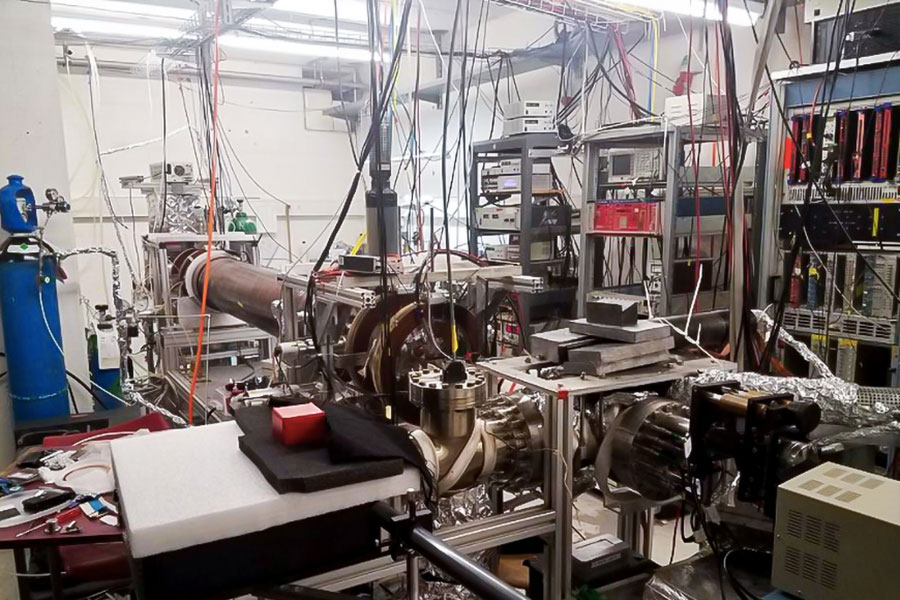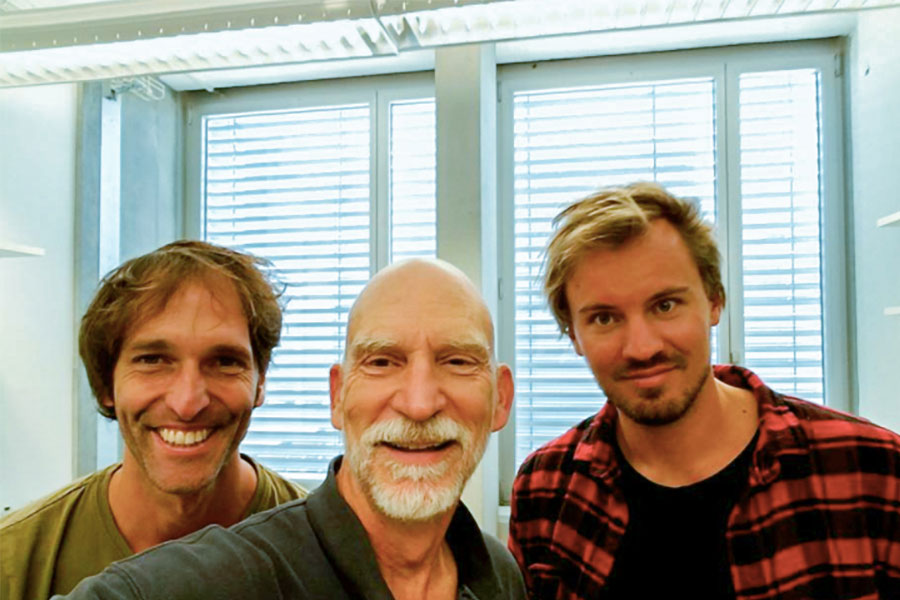Reaping Rewards of Students’ Research for More Than a Decade

From 2000 through 2007, while teaching in the Physics Department at Principia College, Dr. Benjamin Brown (C’71) worked with physics majors to develop a positron beam and trap. (Positrons are antimatter electrons.) Support for the $200,000 project came from the Principia Fund for Excellence and the Peninsula Foundation, funded by Dr. Frank Levinson (C’75), founder of Finisar Corp.
The early 2000s was a particularly fruitful time in the department. Eleven students who worked with Brown on the beam or in other research areas with Professor Paul Robinson (C’63) went on to earn PhD degrees in physics or closely related fields.
Positrons have the same mass as an electron, but with a positive instead of a negative charge. Brown has spent much of his career studying them in basic research experiments and in exploring the nature of their annihilation signature discovered coming from the center of our Milky Way galaxy. The beam built at Principia consisted of a very efficient positron generator, based on a radioactive isotope together with a solid neon moderator at about 10 degrees above absolute zero temperature, roughly -450 degrees Fahrenheit. At Principia, Brown and students worked on an early trap for positrons, with the goal of creating bunches of about 1 million positrons.
 In 2008, Brown moved to Marquette University, where he served as a tenured professor and department chair and is now a professor emeritus. The positron beam moved with him, and he worked with undergraduate physics students there to continue developing the trap part of the positron beam. In 2011, Brown began collaborating with Dr. Paolo Crevelli at ETH Zurich, a top-ranked research university. The goal of their research is to determine whether the exotic atom positronium, a combination of a positron and an electron, obeys the laws of quantum mechanics. Once it became clear in 2013 that more positrons and the trapping of positrons were required to perform the experiment at a higher level of precision, the Principia-Marquette beam—a total of 3,500 pounds of experimental apparatus—was shipped to Zurich. Many successful experiments have been carried out with the beam at ETH, and it continues to operate today.
In 2008, Brown moved to Marquette University, where he served as a tenured professor and department chair and is now a professor emeritus. The positron beam moved with him, and he worked with undergraduate physics students there to continue developing the trap part of the positron beam. In 2011, Brown began collaborating with Dr. Paolo Crevelli at ETH Zurich, a top-ranked research university. The goal of their research is to determine whether the exotic atom positronium, a combination of a positron and an electron, obeys the laws of quantum mechanics. Once it became clear in 2013 that more positrons and the trapping of positrons were required to perform the experiment at a higher level of precision, the Principia-Marquette beam—a total of 3,500 pounds of experimental apparatus—was shipped to Zurich. Many successful experiments have been carried out with the beam at ETH, and it continues to operate today.
(Photo courtesy of Dr. Brown)